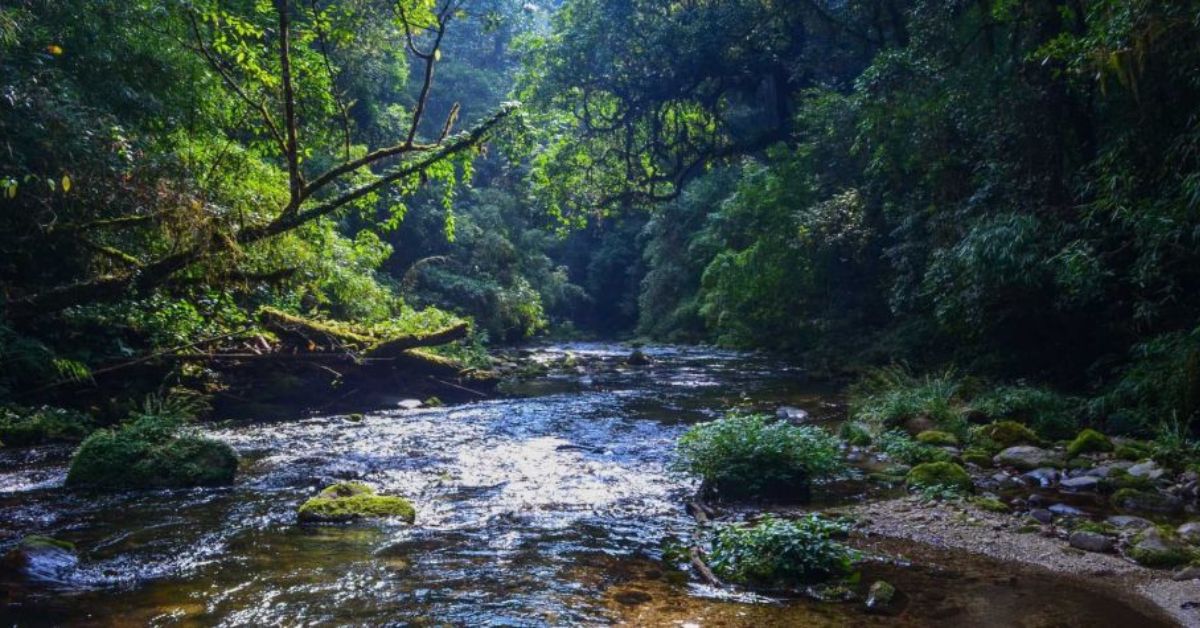Deep in the green hills of Arunachal Pradesh lies Talle Valley Wildlife Sanctuary, a vast and beautiful protected area. Stretching over 300 square kilometers (that’s huge!), it’s a treasure chest overflowing with life. Lush forests, babbling streams, and rolling hills paint a picture-perfect scene, and the variety of plants and animals here will amaze you.
Talle Valley is famous for its rare and shy residents, like the red panda, the clouded leopard, and the unusual Mishmi takin. Birdwatchers will be in paradise with all the different feathered friends to spot. From steamy rainforests to cooler mountain forests, Talle Valley has it all, providing a home for a fascinating mix of creatures.
How to reach:
By Air:
The closest airport is Itanagar, the capital of Arunachal Pradesh, but it lacks regular commercial flights. A larger option is the Rajiv Gandhi International Airport in Guwahati, Assam, a major airport and common entry point for travelers to Arunachal Pradesh.
- From Guwahati: Take domestic flights from major cities like Delhi or Kolkata to Guwahati. Once there, you’ll need to travel by road to reach the sanctuary.
By Train:
The nearest major railway station is in Tinsukia, Assam, well-connected to major Indian cities like Delhi, Kolkata, and Guwahati.
- From Tinsukia: Hire a taxi or take a bus to reach Talle Valley Wildlife Sanctuary. The journey involves scenic but remote and hilly terrain, so be prepared for a bumpy ride!
By Road:
- Itanagar: If you’re already in Itanagar, the capital city, the sanctuary is about 250 kilometers away. You can hire a taxi or take a bus, enjoying stunning views of lush landscapes and hilly terrain along the way.
- Guwahati: The distance from Guwahati to Talle Valley is approximately 300 kilometers. Hire a taxi or take a long-distance bus for this journey through picturesque landscapes and winding roads.
best time to visit:
(October to November):
- Autumn boasts mild and comfortable weather (15°C to 25°C) with clear skies.
- This is an excellent time for wildlife viewing as animals are more active and easier to spot due to the clear skies.
(December to February):
- Winter brings cooler temperatures (5°C to 20°C) and dry, stable weather, perfect for trekking and enjoying clear views of the landscape.
(March to May):
- Spring offers pleasant weather (15°C to 25°C) and is a great time for birdwatching as migratory species arrive and flowers bloom. However, it can get warmer and more humid later in the season.
(June to September):
- The monsoon season brings heavy rain, high humidity (15°C to 30°C), and potential landslides, making travel difficult.
- Wildlife viewing is challenging due to dense foliage and reduced visibility.
- However, the lush green landscape during this period offers a unique backdrop for photography.
attractions:
Biodiversity and Wildlife:
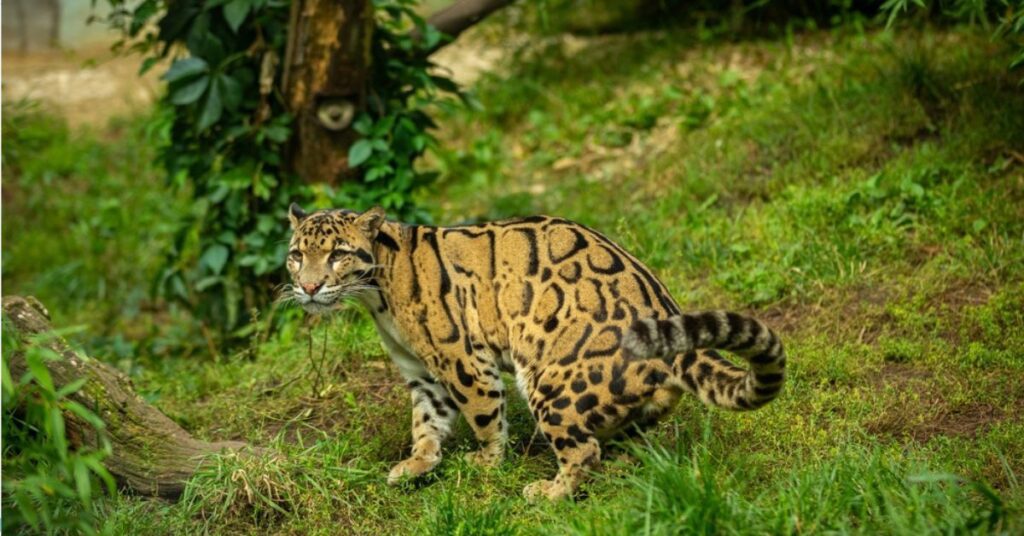
The forest itself changes as you explore, with dense, shady evergreen areas giving way to bamboo jungles and even open meadows high up in the mountains. This variety means all sorts of plants can thrive here, from rare orchids with beautiful flowers to medicinal herbs used in traditional treatments.
Wildlife lovers flock to Talle Valley to spot amazing creatures. The shy red panda, with its rusty red fur, is a big draw. You might also see a clouded leopard silently padding through the trees, or a Mishmi takin, a one-of-a-kind goat-antelope that lives nowhere else on Earth. Other cool animals that call the sanctuary home include Himalayan black bears, golden cats, and different kinds of deer.
Mishmi Hills:
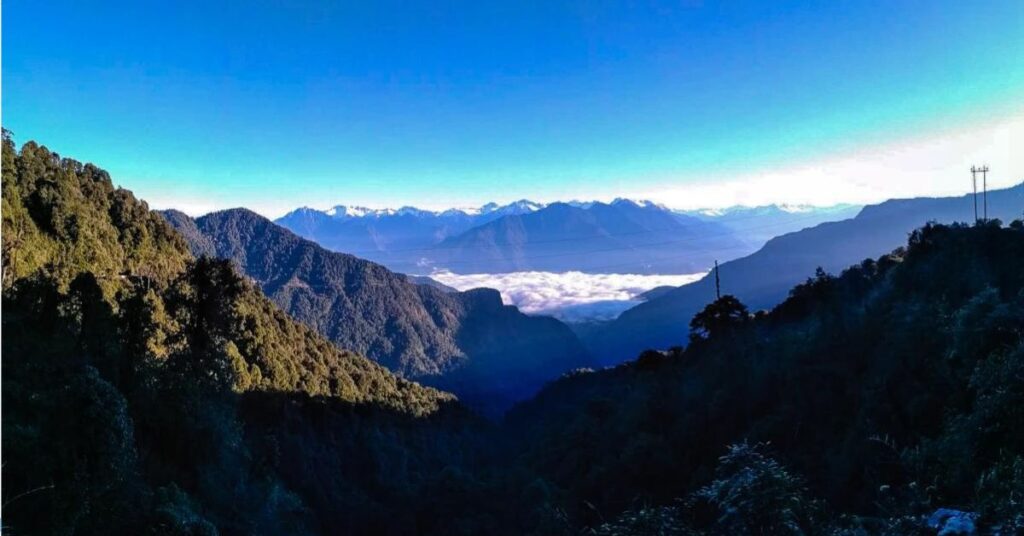
The Mishmi Hills add some serious wow factor to Talle Valley! These hills are covered in thick forests and crisscrossed with hiking trails that lead you to incredible overlooks. Imagine looking out over endless valleys and mountain peaks – that’s the kind of view you get from up there. The Mishmi Hills are like a playground for trekkers and nature lovers. The terrain is rugged and exciting, and the plants are so thick and green it feels like you’ve stepped into another world. Hiking through these hills lets you see all the different parts of the wildlife sanctuary and maybe even spot some cool animals along the way. Because the hills are so high up, you get a special view of the entire area and can really appreciate how diverse the landscape is.
Lohit River:
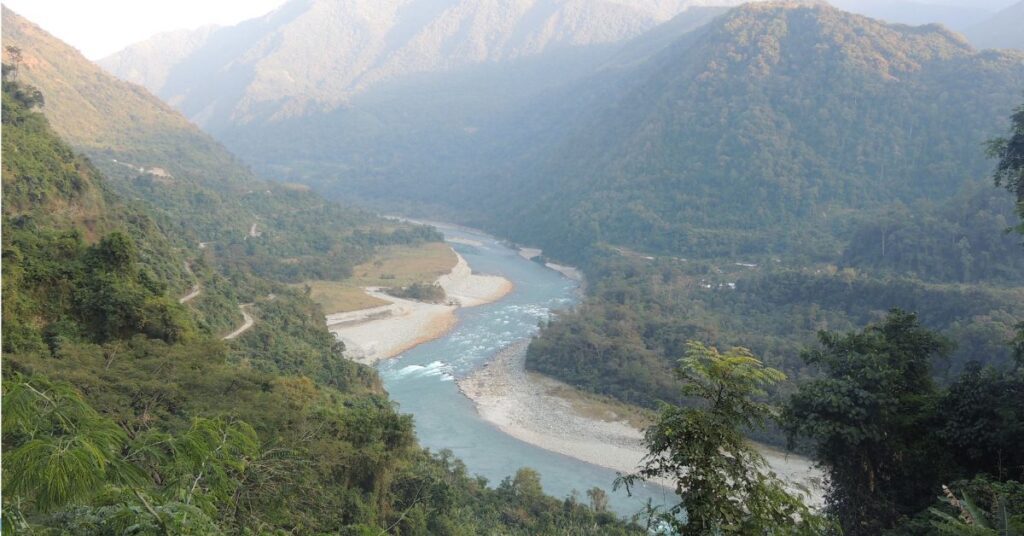
The Lohit River winds its way through Talle Valley Wildlife Sanctuary like a sparkling blue ribbon. It’s more than just pretty though – it’s a lifeline for the whole area. Animals of all shapes and sizes depend on the river for water, and the plants growing along its banks thrive thanks to the moisture it brings. The clear water adds to the peaceful feeling of the sanctuary, and on calm days, you might even be able to spot some fish swimming through it. Plus, the Lohit River helps keep the whole ecosystem in balance, which means there are all sorts of interesting creatures living there, both in the water and on land!
Eco-Tourism Initiatives:
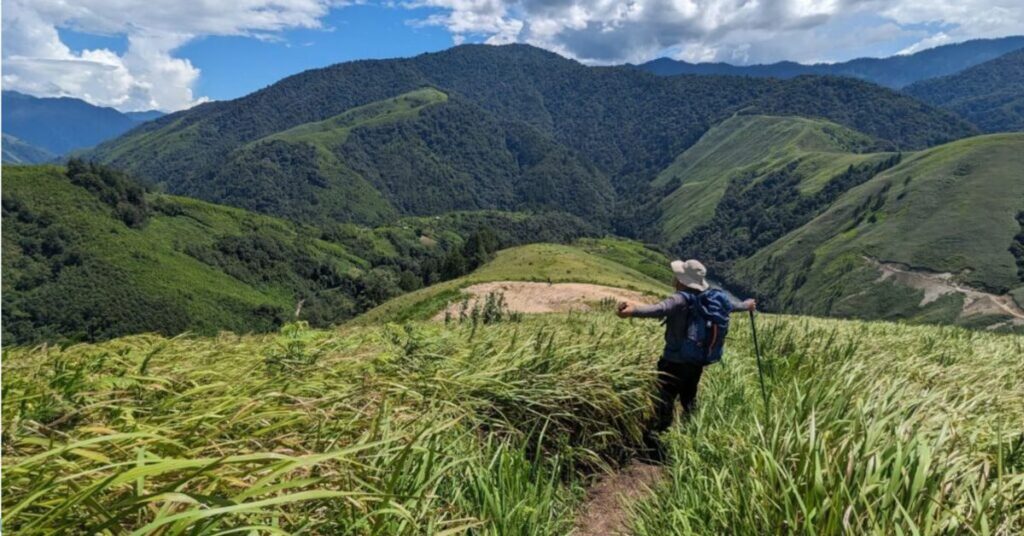
The Lohit River snakes its way through Talle Valley Wildlife Sanctuary like a glittering blue ribbon. But this river is more than just a pretty sight – it’s the lifeblood of the entire area. Animals big and small depend on the Lohit for their water, and the plants lining its banks flourish thanks to the moisture it brings. The clear water adds to the serene atmosphere of the sanctuary, and on calm days, you might even spot some fish flitting through the depths. Most importantly, the Lohit River plays a vital role in maintaining the delicate balance of the ecosystem, ensuring a thriving community of creatures both in the water and on land.
Local experiences:
- Meet the Locals: Visit Dong Village and connect with indigenous tribes. Learn about their customs, traditional crafts they create, and how they live their daily lives.
- Cultural Kaleidoscope: Immerse yourself in vibrant local festivals and celebrations. Witness traditional dances, music, and ceremonies that showcase the region’s rich cultural heritage.
- Craft Workshops: Unleash your inner artisan! Participate in workshops where you can learn traditional crafts like weaving and pottery, gaining a deeper appreciation for local art forms.
- Guided Eco-Tours: Embark on eco-tours led by knowledgeable local guides. Explore the sanctuary’s diverse ecosystems, learn about conservation efforts, and gain fascinating insights about the region’s plants and animals.
- Taste the Local Flavor: Savor delicious local cuisine prepared using traditional methods. Enjoy dishes made with fresh, locally sourced ingredients and experience the unique flavors of the region.
- Shop Local: Explore bustling markets and find unique handcrafted souvenirs, traditional garments, and other regional products. Immerse yourself in the daily life of the local community.
- Wildlife Photography with Experts: Team up with local wildlife enthusiasts and photographers to capture stunning images of the sanctuary’s rich biodiversity. Learn valuable tips and gain insights from those who know the area best.
- Conservation in Action: Participate in conservation activities like tree planting or wildlife monitoring programs. Contribute to preserving the sanctuary’s natural environment for future generations.
- Storytelling Sessions: Gather around and listen to local elders share captivating myths, legends, and historical tales about the region. Gain a unique cultural perspective and enrich your travel experience.
- Dance and Music Performances: Be mesmerized by traditional dance and music performances, often held during festivals or special events. Witness the vibrant cultural heritage of the local tribes come alive.
- Farm Stays: Experience the charm of rural life by staying with local families in farmhouses. Participate in farming activities and learn about traditional agricultural practices.
- Eco-Friendly Sports: Explore the wonders of nature through eco-friendly adventure sports like nature trekking and birdwatching. Local guides familiar with the best spots and practices will lead your exploration.
travel tips:
Permits: Don’t forget the paperwork! Secure the necessary permits and documents well in advance through the Arunachal Pradesh Tourism Department or local authorities.
Weather Watch: Keep an eye on the weather forecast, especially during the monsoon season (June-September) when heavy rains can make travel challenging.
Pack Smart: Be prepared for varying temperatures. Pack clothes for both warm and cool weather, including rain gear, warm layers, and sturdy shoes for trekking.
Local Expertise: Hiring local guides is a great way to enhance your experience. They’re familiar with the sanctuary’s terrain and wildlife, ensuring safe and enjoyable exploration.
Cash is King: While in remote areas, ATMs and credit cards might be scarce. Bring enough cash for purchases, as small markets and villages may not accept cards.
Stay Connected (if possible): Mobile network coverage and internet connectivity can be limited. Let loved ones know your travel plans and expected return dates in case of limited communication.
Respect the Culture: Be mindful of local customs and traditions, especially when visiting villages. Seek permission before photographing people or their property.
Pack Essentials: Come prepared with insect repellent, a first-aid kit, and any personal medications you might need. Remote locations may have limited access to medical facilities.
Hydration and Snacks: Bring plenty of water and snacks for hikes or long journeys. Staying hydrated is especially crucial at higher altitudes.
Wildlife Encounters: Maintain a safe distance from wild animals and avoid feeding or disturbing them. Respect the sanctuary’s rules to ensure your safety and the animals’ well-being.
Eco-Friendly Choices: Minimize your impact on the environment by choosing eco-friendly products and practices. Avoid single-use plastics and dispose of waste properly.
conclusion
Talle Valley Wildlife Sanctuary in Arunachal Pradesh is a beautiful escape for nature lovers. Imagine thick forests, sparkling high-altitude lakes, and rugged mountains – that’s the kind of scenery you’ll find here. Talle Valley isn’t just a haven for wildlife like rare red pandas and clouded leopards, it’s a place to relax and reconnect with nature. But there’s more to discover! Xplro.com, your travel companion for unique adventures, suggests going beyond the wildlife and experiencing the local culture. Meet the indigenous communities, join their celebrations, and learn about their crafts and traditions. These experiences will make your trip even more special. Visit Xplro.com to plan your Talle Valley adventure! Find out the best time to visit, comfortable places to stay nearby, and exciting things to do, whether you want a thrilling hike or a peaceful walk in nature. With Xplro.com, your unforgettable Talle Valley adventure awaits!
FAQs
1. What makes Talle Valley Wildlife Sanctuary unique?
- Talle Valley Wildlife Sanctuary is celebrated for its incredible biodiversity, including rare species like the red panda and clouded leopard. It features diverse landscapes, such as dense forests, high-altitude lakes, and the striking Mishmi Hills.
2. When is the ideal time to visit Talle Valley Wildlife Sanctuary?
- The optimal times to visit are from October to November and December to February when the weather is mild and favorable for exploring and wildlife spotting. Spring, from March to May, is also good for birdwatching. The monsoon season from June to September can be challenging due to heavy rains.
3. How can I get to Talle Valley Wildlife Sanctuary?
- Talle Valley can be reached by air, rail, or road. The nearest airport is in Itanagar, with Guwahati’s Rajiv Gandhi International Airport serving as a major gateway. Tinsukia in Assam is the closest railway station. From these locations, you can travel by road to the sanctuary.
4. Are permits necessary for visiting Talle Valley Wildlife Sanctuary?
- Yes, you need to acquire permits from the Arunachal Pradesh Tourism Department or local authorities. It’s advisable to secure these permits ahead of your trip to avoid any issues.
5. What types of wildlife are found in the sanctuary?
- The sanctuary is home to a variety of wildlife, including the elusive red panda, clouded leopard, Mishmi takin, Himalayan black bear, golden cat, and several deer species. Bird enthusiasts can also find species such as the black-necked crane and Himalayan monal.
6. What are the notable attractions in Talle Valley Wildlife Sanctuary?
- Major attractions include Glow Lake, Bhismaknagar Fort, Dong Village, the Mishmi Hills, and the Lohit River. Additionally, there are numerous hiking and trekking trails that showcase the sanctuary’s natural beauty.
7. What should I bring when visiting Talle Valley Wildlife Sanctuary?
- Pack for varying weather conditions, including waterproof gear, warm clothing, and durable hiking shoes. Also, bring essentials like insect repellent, a first aid kit, any personal medications, and enough cash, as ATMs may not be available.
8. Are there places to stay near the sanctuary?
- Accommodation options near the sanctuary are basic and may include small lodges and guesthouses. For more choices, consider staying in nearby towns like Itanagar or Tinsukia, and book your stay in advance.
9. Can I take part in eco-tourism or conservation activities at the sanctuary?
- Yes, you can participate in eco-tourism activities and conservation programs, such as guided eco-tours and wildlife monitoring. These activities help support conservation efforts and offer a deeper understanding of the sanctuary’s environment.
10. Is traveling to Talle Valley Wildlife Sanctuary safe?
- Generally, visiting Talle Valley is safe, though the remote and rugged terrain requires caution. Adhere to local guidelines, travel with experienced guides, and be prepared for fluctuating weather conditions.
11. What are the dining options like near the sanctuary?
- Dining choices near the sanctuary are limited, often consisting of small local eateries or meals provided by guesthouses. It’s wise to carry snacks and food supplies, especially if you have specific dietary needs.
12. How can I contribute to conservation efforts during my visit?
- Support conservation by engaging in eco-tourism activities, adhering to sanctuary rules, and respecting wildlife and habitats. Avoid littering, use eco-friendly products, and back local conservation projects to minimize your environmental impact.


